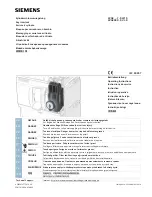
2021/09/01 05:04
3/5
Quick Setup Instructions (Offset Phase Lock D2-135)
Product Manuals - https://www.vescent.com/manuals/
Finding a Beat Note
Fig. 3:
Initial
electric
al
connec
tions to
D2-135
. (As
shown
for
D2-135
-SMA.
For
D2-135
-FC,
connec
t optical output of D2-150 or D2-250 directly to SC fiber input on
face of D2-135.)
Plug the fiber into either the
D2-160 or D2-135-FC
(obsolete). If using the
D2-160, use a short RF SMA
cable to connect the D2-160
to the D2-135-SMA. Look at
the D2-135's Beat Note div/2
monitor on a spectrum
analyzer. You should see a
beat note at half the
frequency difference between
the two lasers. You may need
to tweak the laser current on
one laser to make sure the
frequency difference is in
range. Once you see a beat
note, adjust the laser
frequency until the beat note
starts to broaden or
disappear. When that
happens, park the laser
where the beat note starts to
degrade and tweak the
alignment of the 3 beam
splitters until the beat note
looks good. Repeat until you
have the desired frequency
offset (typically up to ~10
GHz).
D2-135 Locking
Getting a phase lock can be tricky, as the servo feedback must be pretty well optimized to your laser
to get a phase lock. The narrower the linewidth of the laser and the higher the bandwidth of the laser,
the easier it is to get a phase lock. The first step is to get an error signal with a steep slope at the
desired offset frequency and then a basic lock.
Connect the D2-135's Servo Out to the Servo In on your Laser Controller to sweep the slave laser's
frequency. (Refer to
for making electrical connections to the D2-135.) Connect the Ramp TTL
on the D2-135 to the trigger on your O-scope and view the Error In Monitor to the O-scope. Set the
D2-135 to N=16, VCO Low mode, put the Servo in Ramp mode and by tweaking the laser current, you
should see the Error In Monitor look something like what is shown in
.
The reflection point on the
Error Signal is where the two
lasers are at the same
frequency. The Error Signal is
an even function of offset























